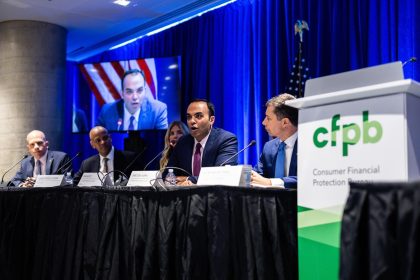One of the things I’ve not been shy about is that banks, in their effort to master digital, have created an efficient servicing experience that is functionally correct, but emotionally devoid. Think about it. Nearly all banks’ mobile apps have similar features and achieve similarly high customer satisfaction scores. But they fail to provide the emotional connection that would routinely develop between customers and their bankers in the branch.
Few people these days actually have conversations with their banks, as the vast majority of customer interactions happen remotely and involve simple tasks like checking a balance or paying a bill. In fact, banks have increased the average number of interactions with each customer 12-fold in the last decade. Now they are having over 1 trillion touchpoints globally, yet nearly 95% of these are completely remote and do not involve any bank employee, according to Accenture Research analysis.
With their mobile apps struggling to stand out in a sea of sameness, many banks have lost the ability to differentiate themselves. As a consequence, customer loyalty has taken a hit as consumers increasingly acquire financial service products from a new provider.
While the digital experience built by banks is slick and meets customers’ expectations, it’s also a missed opportunity. Imagine if it could use today’s channels to do what the traditional banker did every day: listen to customers, recognize the signals they’re sending, and have a conversation.
With generative AI, banks can potentially put meaningful conversations back into banking. This could allow them to understand customers’ moods and aspirations and respond with empathy and relevance. Imagine what the financial impact would be for banks if they could turn just 1% of digital touchpoints into sales opportunities. I call this Capturing the Digital Dividend — small movements that could create enormous benefit for banks’ consumer and small business franchises.
How could they do this? Think about what happens today when you call your bank: “Press one for English, two for Spanish, three for your balance, four for …” You get the picture.
Now imagine you’re having a problem logging in to your bank’s website and you call the customer support line. What if rather than being met with the standard menu of “press one for …” the system greeted you with “Hello Michael, I see you’re having trouble logging in — is that what you’re calling about?” You respond and quickly get help.
All of a sudden, via conversational AI, banks can show their customers that they recognize them as individuals with unique issues in any channel. They can solve their problems in ways that would be like texting or talking to their banker.
Banks could then take this even further. Imagine a scenario where you log in to your banking app to check the interest rate on your account. The app instantly recognizes that you are looking to optimize your savings and starts a conversation like a branch manager would have done.
In this way, banks could convert their touchpoints from dead-end servicing into a conversation, which then evolves into an opportunity — without having to scale up call center staffing levels. The experience could blend back and forth seamlessly between conversational AI and human bankers, starting first with more simple experiences before pivoting to the complex over time.
One example of a bank that’s already reaping the digital dividend is Intesa Sanpaolo, whose AI-based digital assistant, Ellis, operates across the bank’s voice and messaging platforms to respond to customer inquiries. Ellis can recognize the customer’s intent, understand their requests and quickly resolve them. If a request is too complex, Ellis can transfer the caller to a human agent and provide the appropriate context (ensuring that the customer doesn’t have to start again from square one). More recently, the bank developed an agent desktop powered by generative AI to serve as a co-pilot for agents, helping to quickly advise them and handle customer inquiries.
I’ve talked a lot about conversations, but that is just one type of experience. Banks could also incorporate advice and offers into their navigation schemes and flex the navigation depending on what the customer is looking for. By combining advanced digital capabilities and data banks could enhance their experiences, change behavior and unlock value. There’s one thing that banks should not do: Plaster their apps with banner ads!
On its own bank data is practically worthless, but together with the ability to modify behavior it becomes incredibly valuable. Banks can use it to understand the intent of the customer and build an experience that meets them where they are with valuable advice and meaningful propositions. It can be as simple, personalized and rewarding as using Google Maps.
I believe this would have an incredible impact on customers and would change their perception of banking from a cold, impersonal service to a relationship with people who care about and are looking out for them.
Ultimately, banks have to move beyond their product mindset and take a more customer-centric approach. As they commit to once again having authentic conversations, their banking apps could become a means of welcoming customers back to an organization that truly cares.
Read the full article here

















